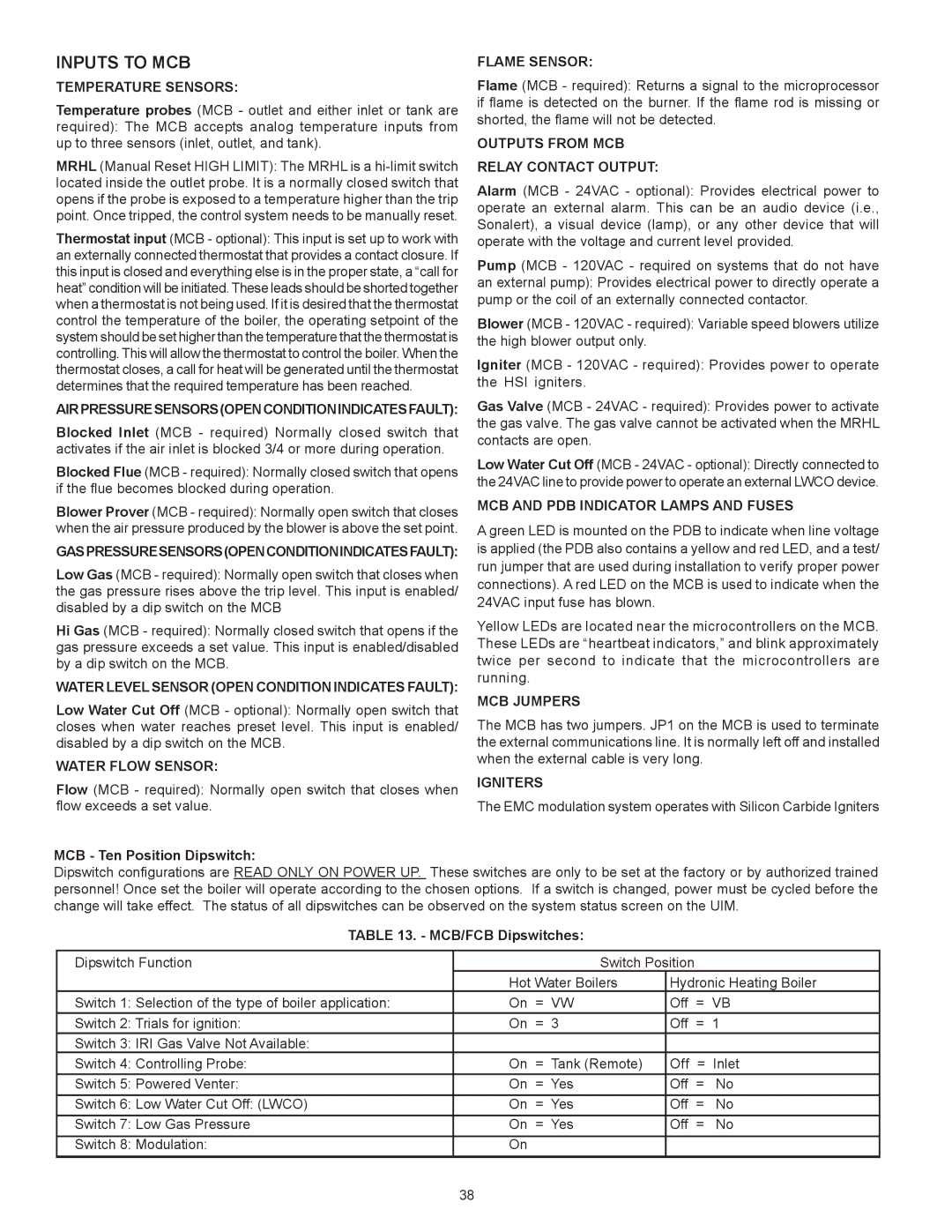VB/VW- 1000, VB/VW- 750 specifications
A.O. Smith is a renowned name in the water heating industry, and their VB/VW-750 and VB/VW-1000 models reflect the cutting-edge advancements in both design and functionality. These commercial water heaters stand out due to their innovative features and robust characteristics, making them ideal solutions for various applications in commercial settings.The VB/VW-750 and VB/VW-1000 models are designed with high efficiency in mind. They utilize advanced heat transfer technology that maximizes energy use, translating to significant savings on utility bills. These units are engineered to deliver consistent hot water supply, essential for businesses such as restaurants, hotels, and manufacturing facilities where extensive hot water demands are necessary.
One of the standout features of the VB/VW models is their high recovery rate. This means they can produce a large volume of hot water within a short period, catering to peak demand times without compromising performance. Additionally, the units come equipped with a durable tank made from high-quality materials to resist corrosion, which ensures a long lifespan and reliability in service.
The VB/VW-750 and VB/VW-1000 are also equipped with advanced control systems. These systems provide precise temperature regulation, improving safety and energy efficiency. The smart pumping system further enhances performance by optimizing water flow and reducing energy consumption during operation.
Maintenance and serviceability are key characteristics of these models. They feature easy access to critical components, allowing for quick inspections and repairs. This design consideration minimizes downtime, which is crucial for any business reliant on continuous hot water supply.
Both models are compliant with various industry standards, including energy efficiency regulations. A.O. Smith has focused on ensuring these water heaters not only meet but exceed these requirements, contributing to sustainability efforts.
In summary, the A.O. Smith VB/VW-750 and VB/VW-1000 models combine efficiency, reliability, and ease of maintenance. Their advanced features and cutting-edge technologies make them a top choice for commercial hot water applications, positioning A.O. Smith as a leader in the water heating industry. With their strong performance and durability, these models are designed to meet the demands of modern businesses while providing peace of mind regarding hot water availability.
